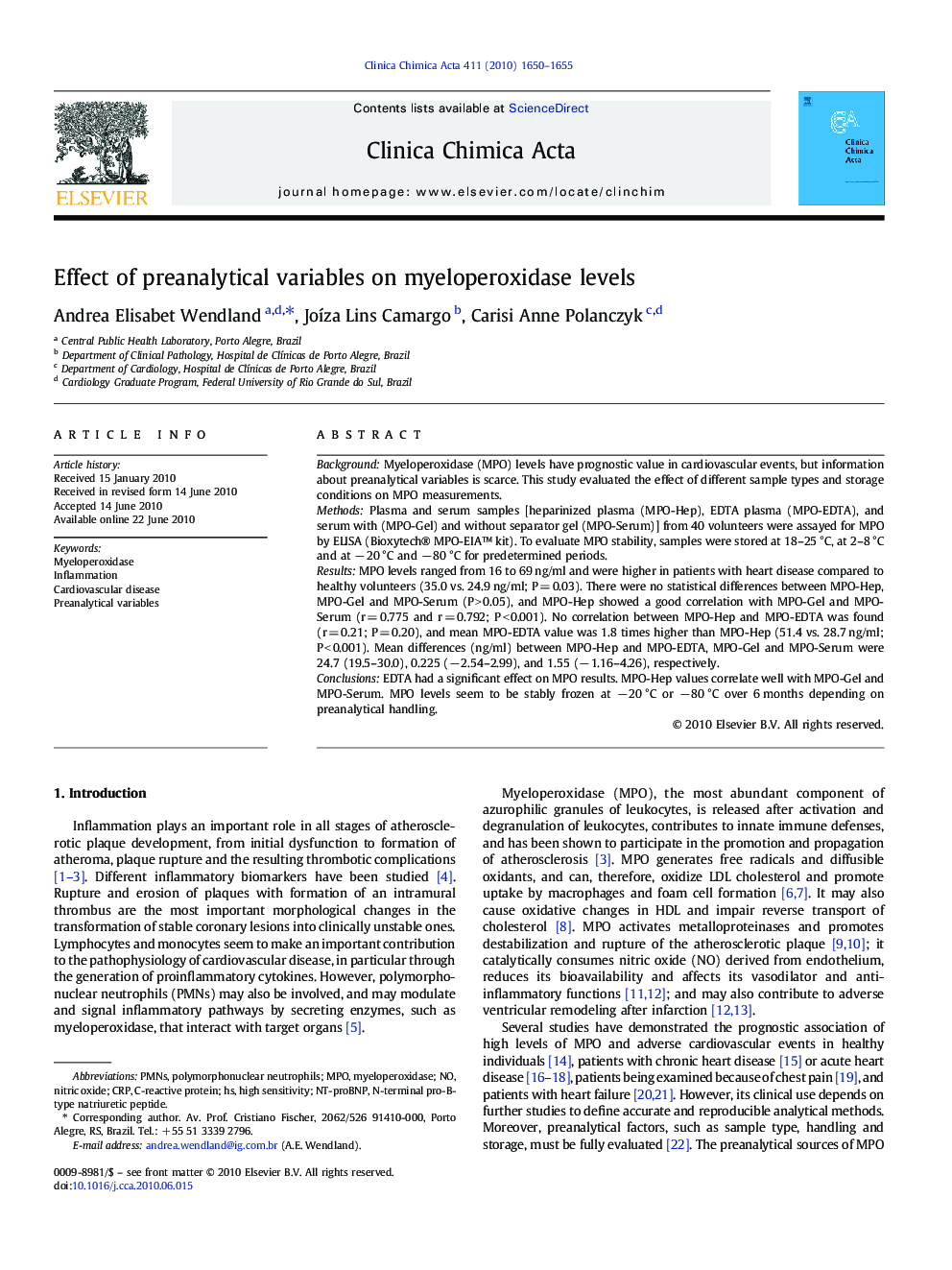| Article ID | Journal | Published Year | Pages | File Type |
|---|---|---|---|---|
| 1966721 | Clinica Chimica Acta | 2010 | 6 Pages |
BackgroundMyeloperoxidase (MPO) levels have prognostic value in cardiovascular events, but information about preanalytical variables is scarce. This study evaluated the effect of different sample types and storage conditions on MPO measurements.MethodsPlasma and serum samples [heparinized plasma (MPO-Hep), EDTA plasma (MPO-EDTA), and serum with (MPO-Gel) and without separator gel (MPO-Serum)] from 40 volunteers were assayed for MPO by ELISA (Bioxytech® MPO-EIA™ kit). To evaluate MPO stability, samples were stored at 18–25 °C, at 2–8 °C and at − 20 °C and − 80 °C for predetermined periods.ResultsMPO levels ranged from 16 to 69 ng/ml and were higher in patients with heart disease compared to healthy volunteers (35.0 vs. 24.9 ng/ml; P = 0.03). There were no statistical differences between MPO-Hep, MPO-Gel and MPO-Serum (P > 0.05), and MPO-Hep showed a good correlation with MPO-Gel and MPO-Serum (r = 0.775 and r = 0.792; P < 0.001). No correlation between MPO-Hep and MPO-EDTA was found (r = 0.21; P = 0.20), and mean MPO-EDTA value was 1.8 times higher than MPO-Hep (51.4 vs. 28.7 ng/ml; P < 0.001). Mean differences (ng/ml) between MPO-Hep and MPO-EDTA, MPO-Gel and MPO-Serum were 24.7 (19.5–30.0), 0.225 (− 2.54–2.99), and 1.55 (− 1.16–4.26), respectively.ConclusionsEDTA had a significant effect on MPO results. MPO-Hep values correlate well with MPO-Gel and MPO-Serum. MPO levels seem to be stably frozen at − 20 °C or − 80 °C over 6 months depending on preanalytical handling.
